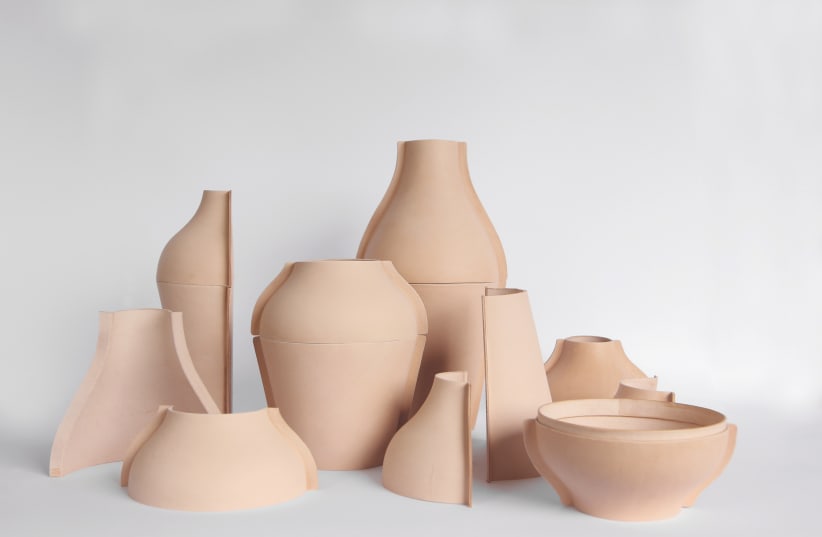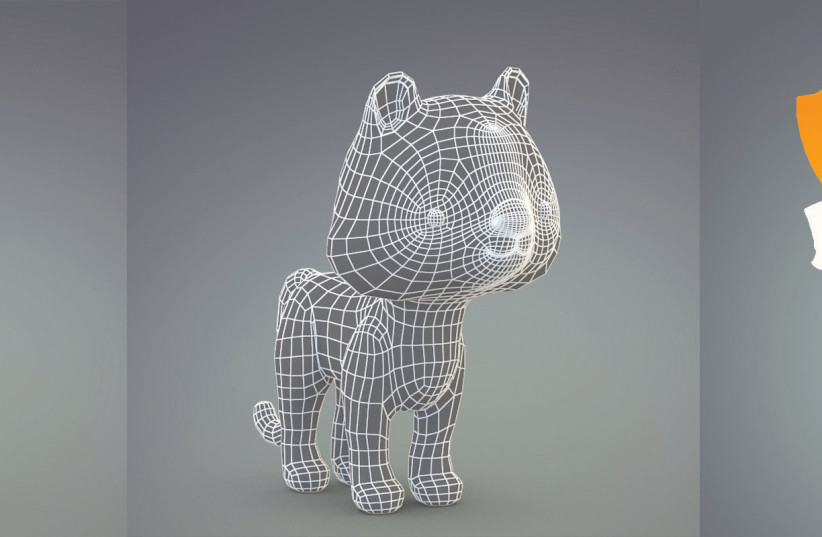Over the past couple of years or so we have been forced to take a step back from our regular daily routines, including the crucial matter of time management. When the first lockdown descended upon us, suddenly all those pressing errands, things we simply had to get on with, came to a shuddering halt. All those meetings we had been impatiently speeding along to, along our country’s highways and byways, abruptly vanished. The time is money ethos dissipated in a puff of Ministry of Health smoke.
The philosophical detritus of the COVID-19 pandemic era also finds its way into the world of design, and the way designers now approach their craft. That is succinctly conveyed in the 11th edition of Jerusalem Design Week which kicked off Thursday at Hansen House and is due to run through till June 30.
That put a whole new angle on temporal issues and continues to impact on our quotidian thinking, whether we like it or not. With that very much in mind, the festival’s perennial artistic director Anat Safran settled neatly on For Now as the event’s title and thematic anchor.
The 8-day program takes in a slew of exhibitions, projects, performances and installations, both inside the venerable edifice, and all around the expansive grounds. All told, the spread embraces the work of some 150 predominantly Israeli designers but with more than a touch of big wide-world thinking. In addition to global influences that find their way over here, the exhibits include intriguing works by artists from further afield, bringing their cultural input from aesthetic pastures in Italy, Japan and Turkey.
Shahar Kedem has culled a suitably wide-ranging set of thinking and application for the Go for Broke (Shod VaShever) show he curated for the occasion. The exhibition straddles the timeline between ancient times and the here and now, and artifacts of old and the 21st century.
"I see a synagogue that was destroyed, with a mosque built on top of it and then [a] church, and all involve secondary use stones. We should think about that.”
Shachar Kedem
Kedem is clearly the right person for the job. Born and raised on the Golan Heights he says he grew up with finds from bygone times in his youthful eye line. “Until now, I had a remote idea of what archaeology is about,” he admits. “On the Golan Heights, archaeology – destruction – is something you find at ground level.”
HE SAYS he has always been fascinated by the interdisciplinary core he associates with the field. “Archaeology is an exact science but it is also very much part of the humanities. There is a person and he has to imagine what he, in fact, doesn’t see.” That references the job of the archaeologist who tries to reconstruct life as it was, centuries or possibly millennia earlier, when the remains of the structure or pottery vessel he comes across in the field are all he has to go on.
Therein lies the link with Go for Broke, and the connect-the-dots ethos crops up right through the collection. “He compares the details of the [archaeological] find, in a visual and intellectual way,” Kedem continues. “In that respect, I think it is very similar to the work and thought processes of the designer. There is a constant inventive side to it, and an attempt to make the artifact or design accessible to the viewer or user.”
The curator also sees parallel lines between the behind-the-scenes machinations too. “A shard which is found in the ground is then sorted and sent to a laboratory, documented and analyzed, and kept in storage and, maybe, subsequently exhibited. There are so many ways of looking at it, depending on the light you shed on it. And it is the same with the designer’s work. They create something and then show it to the public.”
That is palpable in the work of the 13 designers who make up the Go For Broke group. One creation, by Dov Ganchrow, has stone fragments tightly positioned around a pear-shaped epicenter with the “missing” piece placed to one side. The deconstructionist-reconstructionist message is crystal clear. Then we move into digital realms with a charming toy tiger figure, by Ganchrow and creative collaborator Guy Megides, shown in full, with grid-like planning substratum and in cutout spread.
Kedem also wants to shake things up a little. Archaeologists base their assumptions, naturally, on learned professional considerations. The design of a shard, stone fragment, or piece of a column capital found in situ, or in an ancient debris dump, will be compared with finds from excavations that bear a historical or cultural resemblance, around the region or located further afield.
But Kedem feels there may be some more dots and crosses to be added to the archaeological and aesthetic “i”s and “t”s. “For me, at least, that prompts some sort of speculative thinking. Why, for example, should a particular jug be completed with a specific shape of mouthpiece, just because we have seen millions of other vessels like that? Perhaps that mouthpiece belongs to a different vessel.”
A COMPELLING WORK by Noa Rich and Micha Yisraeli conveys that mix-and-match ethos is no uncertain terms. The designers shows us amphorae, pitchers, pithoi and various other ceramic vessel shapes, overlapping and in all sorts of shades, in addition to the au naturel state, with ghosted missing parts. The idea is that, as Kedem suggests, there are numerous permutations out there to be had. And, who’s to say which suits best?
Who indeed? Then again, there are seasoned professionals who would argue otherwise. But, in the wider universe of the arts, of course, any work is there for the taking, and can be construed and interpreted by members of the public as they deem fit.
What determines value?
That comes into the designer’s purview too. “We amassed a lot of questions about that,” says Kedem. “We need to challenge our own thinking a bit, and consider whether something is correct.” That has wider conceptual, disciplinary and philosophical implications. “At what stage does a stone you encounter in the field become an archaeological find? What does it have to experience, how much does it need to have a human intervene in its visibility, and the way it is used, for it to become a find or something of value?”
Shod VaShever raises all sorts of issues and may well furrow a few brows over at Hansen House. The Hebrew title itself certainly suggests there may be some ulterior motive lurking in the background. Go For Broke is a pretty nifty English equivalent but, translated literally, it means “theft and fracture,” implying something a lot more sinister may be in the aesthetic mix.
So, what constitutes theft? Take a trip around the Golan Heights and you are more than likely to find the odd piece of column or capital serving as a fetching centerpiece of a moshav garden or such like. Should the archaeological remnant really be sitting gathering dust in a museum storeroom, or proudly posing in a neatly illuminated display cabinet?
Kedem feels, like the fruits of the designers’ capable hands and minds, that we should all have access to it all. “Yes, there have been wars, history, politics on the Golan Heights but I grew up seeing these things strewn all over the place, on the ground. I see the life cycles. I see a synagogue that was destroyed, with a mosque built on top of it and then [a] church, and all involve secondary use stones. We should think about that.”
The march of time is, indeed, something to ponder.
For more information: https://2022.jdw.co.il/en/

